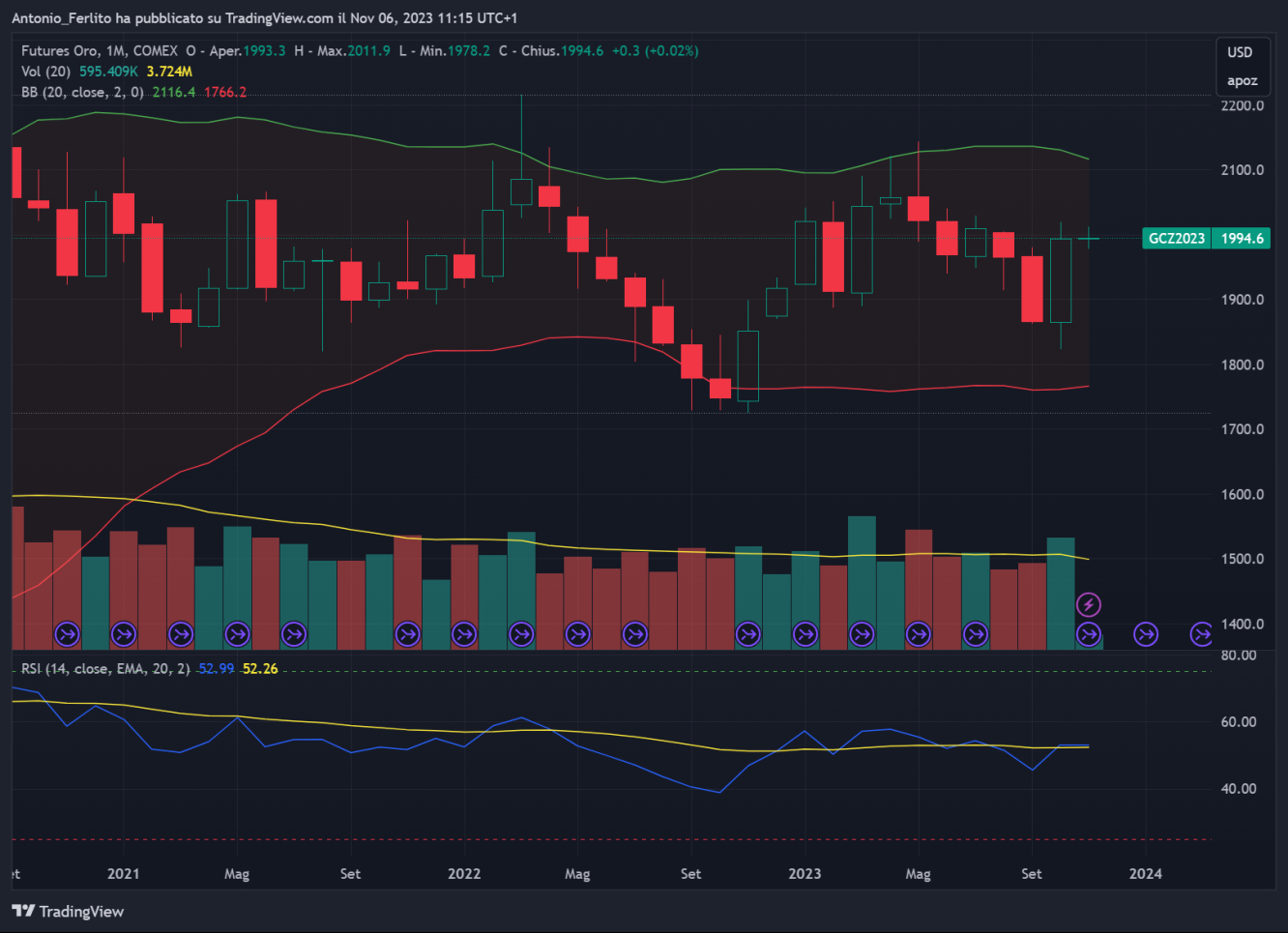Is the bull run in gold prices coming to an end?
Gold prices are slightly lower today in response to rising U.S. bond yields.
However, gold remains an important investment tool for many people seeking stability and protection in the financial market.
A crucial factor that will affect the gold market in the near future will be the yield on 10-year U.S. Treasury bonds.
If we notice an increase in yields, this could lead to the price of gold falling below $1,974, a key support level to watch.
There is a clear inverse relationship between this and the U.S. 10-year bond yield.
Data last Friday revealed that U.S. job growth declined during October and annual wage growth was the lowest in two and a half years, suggesting a weakening labor market situation.
After the release of the employment report, there is an expectation that the Fed may have ended its policy of raising rates, which led to a drop in the dollar to a six-week low.
There is increasingly good news for gold investors as the SPDR® Gold Shares (NYSE:GLD), the world's largest gold-traded fund, announced a 0.20 percent increase in its holdings last Friday to 863.24 tons.
Recently, gold has been under pressure due to rising real yields on U.S. Treasuries.
However, the Oct. 7 Hamas terrorist attacks caused the metal to overshoot, reversing this trend.
The reason gold prices rise at the start of a war is because there is an expected impact on real yields.
Although higher oil prices and rising military spending should theoretically lower real bond yields, in reality, there have been rises because of concern about possible increases by the Fed.
There are several options for investing in gold.
The first option is physical gold, which includes gold coins, bars, and jewelry.
Another avenue is gold futures, which involves a commitment to buy gold at a later date.
Alternatively, investors and traders can opt for gold-related stocks, such as gold-focused ETFs like the renowned SPDR Gold Trust (P:GLD) or stocks of gold mining companies.
From a technical perspective, the situation on gold is neutral with an uncertain phase.
The primary trend remains upward and this is also confirmed by the close above the slow-moving average.
The stochastic (42.3) is also in the lower part of its range, without yet providing any indication as to whether we are at the beginning of a bullish phase or whether short-term congestion will continue.
As those who follow me can attest, I am not a big fan of gold.
I do not expect U.S. 10-year bond yields or the value of the dollar to decline significantly in the last quarter of the year.
This means that barring a global conflict, the run-up in gold prices has come to an end because there is an inverse correlation between gold and bonds and the dollar.
I expect gold prices to remain stable in the coming months, staying within the range of 1800 to 2000.
